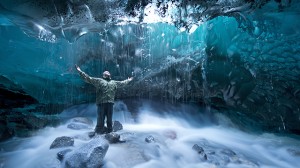Royal Dutch Shell on Tuesday announced that it was all systems go and—despite all warnings and protest—would begin active drilling in the Arctic.
Shell began shallow-water drilling in the Arctic’s Chukchi Sea on July 30, but had to put further operations on hold until the arrival of the MSV Fennica, an ice management ship sent to safeguard the company’s drilling operations. The Fennica has been undergoing repairs in Oregon for weeks after workers en route to the Arctic discovered a 39-inch gash in its hull in early July. Federal regulations require that a safety vessel be present for Shell to dig into petroleum zones approximately 8,000 feet under the ocean floor.
Greenpeace activists also blocked the ship’s attempts to disembark from Portland on July 30 by rappelling down St. John’s Bridge, but the standoff was eventually broken up by Portland police and the U.S. Coast Guard.
Opponents of the project pointed to the Fennica‘s rupture as a reminder of Shell’s poor safety record in offshore drilling. The company is resuming operations that were delayed three years ago after a separate vessel, the Kulluk, ran aground on an island near Kodiak, Alaska.
Environmental activists say a spill in the remote and pristine Arctic waters could prove more disastrous than the 2010 Deepwater Horizon accident in the Gulf.
Pat Pourchot, the U.S. Interior Department’s former Special Assistant for Alaska Affairs, confirmed as much on Tuesday, telling the Guardian that if a spill did occur, “It’s really tough to talk about effective clean up. I don’t think anybody should have illusions. Clean up will be extremely modest.”
Added Greenpeace senior climate adviser Charlie Kronick, “Shell’s catastrophic record since 2012, as well as their mishap-plagued progress to Alaska this year, show just how unprepared they are for the harsh conditions of the Arctic. The company is patently unwilling to call time on this wasteful and potentially catastrophic project. It’s now up to the regulators and investors to do so.”



